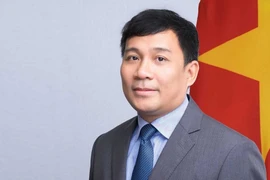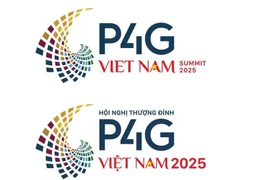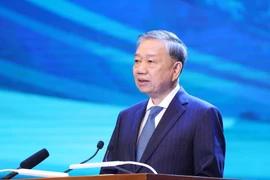Hanoi (VNS/VNA) - As the need for climate emergency escalates and environmental challenges deepen, leaders and representatives from more than 40 countries gathered at the P4G Vietnam Summit held in Hanoi on April 16 to discuss solutions for a sustainable future while putting people at its core.
At the high-level talks chaired by Prime Minister Pham Minh Chinh, a representative of the United Arab Emirates (UAE), a long-standing regional leader in clean energy, said the country used the P4G platform to reinforce its commitment to a people-first green transition.
“People are and must always remain at the heart of our development plans, globally, regionally and nationally,” said the UAE representative.
This principle is being actioned through the UAE’s Net Zero Strategy 2050, which is positioned not just as an environmental blueprint but as a stimulus for economic and social advancement.
The UAE is investing heavily in clean transport and a circular economy, prioritising sectors like sustainable infrastructure, food systems and transport.
At the technological frontier, the UAE is integrating AI and blockchain into renewable energy optimisation and smart agriculture.
“AI offers us abundant opportunities, abundant practical solutions for many of the challenges posed by climate change,” the representative added.
These innovations will be spotlighted at the Emirates Agriculture Conference and Exhibition next month, which will feature smart irrigation and agri-tech for sustainable food production.
Meanwhile, Japan echoed the urgency of immediate and collective climate action. With a focus on implementation, the representative of Japan introduced Japan’s updated Nationally Determined Contributions (NDCs), including a 60% emissions reduction by 2035 and 73% by 2040.
Japan’s approach rests on aligning environmental goals with stable energy supplies and economic growth.
“We will promote the simultaneous realisation of decarbonisation, stable energy supply and economic growth,” said the Japanese representative, adding that Japan’s Joint Crediting Mechanism (JCM), operational in 29 countries, exemplifies technology-driven cooperation.
What sets Japan apart is its belief in the synergy between global collaboration and local innovation.
“The synchronised data of P4G is a great opportunity to learn technologies and strengthen our collaboration,” he said while encouraging all participants to engage deeply in technology exchange.
China’s delegate shared President Xi Jinping’s philosophy of ecological civilisation.
The country has demonstrated significant results. Since 2012, carbon emissions per unit of GDP have fallen by over 35%, and by 2024 new energy vehicles exceeded 12.8 million units in sales.
“Green productivity has become a driving force for China’s economic growth,” the representative said, adding that ecological red lines now protect 30% of China’s land and more than 300 endangered plant species have been reintroduced to the wild.
Crucially, China is advancing green technology integration, focusing on transforming traditional industries like steel and petrochemicals through innovation. The goal is to build "a green manufacturing system and service system", backed by robust green finance mechanisms and carbon markets.
China is also calling for a more equitable global approach to sustainability, criticising protectionist policies like carbon border adjustments.
"These increase the costs of global energy transition," the representative warned, reaffirming China's commitment to multilateral cooperation through initiatives like the green Belt and Road.
Green transition
Singapore offered a pragmatic framework for a people-centred green transition, warning that the economic and social benefits of transition must be equitably shared and not unfairly borne by vulnerable populations.
To achieve this, Singapore focuses on three pillars: mitigating the social costs of climate action, workforce transformation and participatory policymaking, where communities and stakeholders shape transition plans.
"We must ensure that people’s lives are improved in the process," the Singapore representative concluded, reinforcing that sustainability is not just about the planet but also about prosperity, fairness and inclusion.
As a founding P4G partner country, Denmark highlighted Vietnam’s role in P4G as a key market for the international business community.
“Today's geopolitical reality sheds a new light on multilateral cooperation. By now, we know that business as usual is not enough. We need innovative solutions,” said the representative of Denmark.
“And P4G has proven that when we build strong partnerships between the public, private and civil sectors, we deliver on the green transition,” she said, adding that with P4G, public funds have mobilised considerable private investments.
“We believe looking at blended capital for partnerships is the right way to go. This enables P4G to directly intensify climate entrepreneurship across our economies. We look forward to following the exciting next steps of P4G's journey. And in this room, we share a commitment to mobilise investment for climate and to work together in multilateral cooperation.”
Concluding the meeting, PM Chinh underscored the need for multilateral cooperation to address global threats, including climate change, pandemics, and environmental degradation.
“No single country can resolve these issues alone,” he said. “The transition to a green and sustainable economy is inevitable. It cannot be delayed.”
The PM also laid out four foundational pillars of Vietnam’s development vision: resources, motivation, strength and innovation, with people at the centre of it all.
“People are both the goal and the driving force of development. They are our most valuable resource,” he said.
“We pursue growth without sacrificing social progress or environmental sustainability. No one should be left behind.”/.

See more
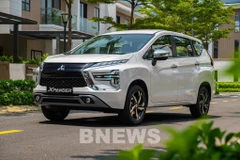
Vietnam’s auto sales in April increase 21% year-on-year
Industry experts believe that with increased consumer demand and support policies from automakers, the domestic automobile market is forecast to further thrive in the second and third quarters of this year.
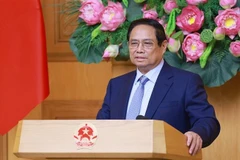
US businesses affirm long-term commitment to Vietnam
During the meeting, US delegates expressed appreciation for the Vietnamese Government’s goodwill and for its efforts to maintain a favourable investment climate. They proposed Vietnam continue enhancing its business environment by addressing bottlenecks in administrative procedures, non-tariff barriers, taxation, and fees, while ensuring infrastructure conditions, transparency, and rules of origin
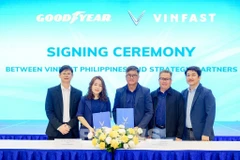
VinFast to establish over 100 service centres in Philippines
Four Philippine partners will operate official VinFast service centres offering maintenance, repairs, and customer care for EVs in line with the company’s global standards.

Vietnam, US push for balanced trade
Imports from the US are predicted to rise sharply in the coming months as large Vietnamese enterprises are accelerating purchases from the North American market in efforts to balance bilateral trade.

Vietnamese enterprises seek stronger partnerships with US at investment summit
The visit and a series of bilateral meetings with US partners underscore Vietnam’s strong commitment to deepening trade and investment ties with the US, a comprehensive strategic partner and the world's leading economy.

Banks cut staff, transaction branches amid digital promotion
VietinBank will be the first bank in the country’s group of four largest State-owned commercial banks (Big4) to cut the number of its transaction offices. According to a plan released at VietinBank’s annual general meeting of shareholders (AGM) recently, the bank is expected to cut hundreds of transaction points to streamline the system in 2025.

Binh Duong develops new 16-hectare centralised IT zone
The establishment of a new centralised information technology (IT) zone in Binh Duong Province marks a significant step in the locality’s digital transformation strategy and its ambition to build a knowledge-based economy.

VinFast officially unveils new compact electric cargo van
Priced at 285 million VND (about 10,980 USD), the first VinFast EC Van units are expected to be delivered to customers starting this November.
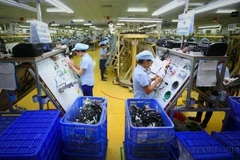
PM orders overhaul to improve business environment
The dispatch further highlights the need for comprehensive measures to enhance governance capacity, accelerate socio-economic progress, and improve the investment and business landscape with a clear emphasis on sustainable development and environmental stewardship.
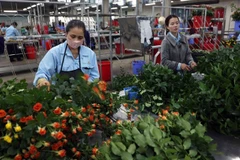
Vietnam's flower export turnover surpasses 100 million USD mark
The total area dedicated to growing flowers and ornamental plants has reached nearly 45,000 ha, an eightfold increase compared to the year 2000.
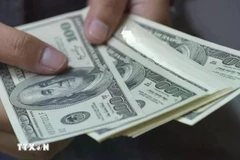
Reference exchange rate up 28 VND on May 13
The State Bank of Vietnam set the daily reference exchange rate for the US dollar at 24,973 VND/USD on May 13, up 28 VND from the previous day.
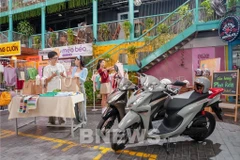
Honda’s motorcycle, auto sales surge in Vietnam
Honda Vietnam reported robust sales growth in April across both its motorcycle and automobile segments, with year-on-year increases of 6.9% and 18.9%, respectively.
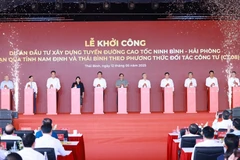
Transport, industrial development essential for Thai Binh to be wealthier: PM
The groundbreaking ceremonies of the Ninh Binh–Hai Phong Expressway Project’s section and the Hung Phu Industrial Park in Thai Binh affirm the government’s determination to create an attractive investment and business environment for both domestic and foreign investors; foster provincial and regional connectivity, generate momentum and open new development space for Thai Binh and the northern coastal region.
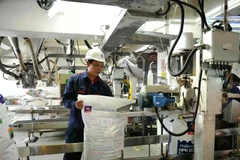
Ca Mau fertiliser gains top-level export certification from Australia
PVCFC was the only fertiliser company in Vietnam to achieve "Level Two System Status" in Australia as of 2024 and has since advanced to Level One by 2025.

Vietnam Airlines signs MoU on cooperation with Russia's VTB Bank
The MoU also demonstrates Vietnam Airlines' efforts to expand its partnership in the international market, while affirming its pioneering role in connecting Vietnam with the world, contributing to the sustainable development of Vietnam-Russia relations in the new period.
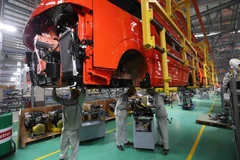
Vietnam eyes 8% growth in 2025 through strategic reforms
With decisive policy actions, proactive diplomacy and strategic reform priorities, the country is now aiming for an ambitious GDP growth target of 8% or more this year - a goal lawmakers and experts believe is within reach, provided key breakthroughs are implemented effectively.
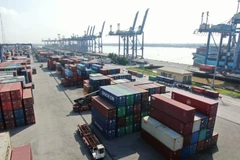
Vietnam enjoys positive export growth in new markets
According to the Ministry of Industry and Trade, by the end of April, Vietnam’s total export turnover reached 140.34 billion USD, an increase of 13% compared to the same period in 2024.
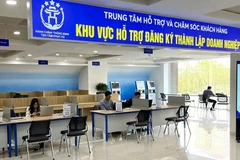
Hanoi targets 30,000 new enterprises in 2025
By the end of 2024, the number of registered enterprises in the capital city reached over 400,000, with about 220,000 operating. Notably, more than 98% of the operating firms are SMEs which create jobs for 55.1% of the local workforce and contribute over 40% of the city’s gross domestic product (GDP).

TH Group inaugurates large-scale dairy processing plant in Russia
The plant has a total capacity of 1,000 tonnes per day, with the first phase producing 500 tonnes daily. All milk used at the plant is sourced from TH’s high-tech farms in the Moscow and Kaluga oblasts. TH milk boasts a high nutritional profile, with a fat content of 4.0% and protein at 3.2% — among the highest quality levels in Russia.

Reference exchange rate down 6 VND at week’s beginning
The State Bank of Vietnam set the daily reference exchange rate for the US dollar at 24,945 VND/USD on May 12, down 6 VND from the last work day of the previous week.
